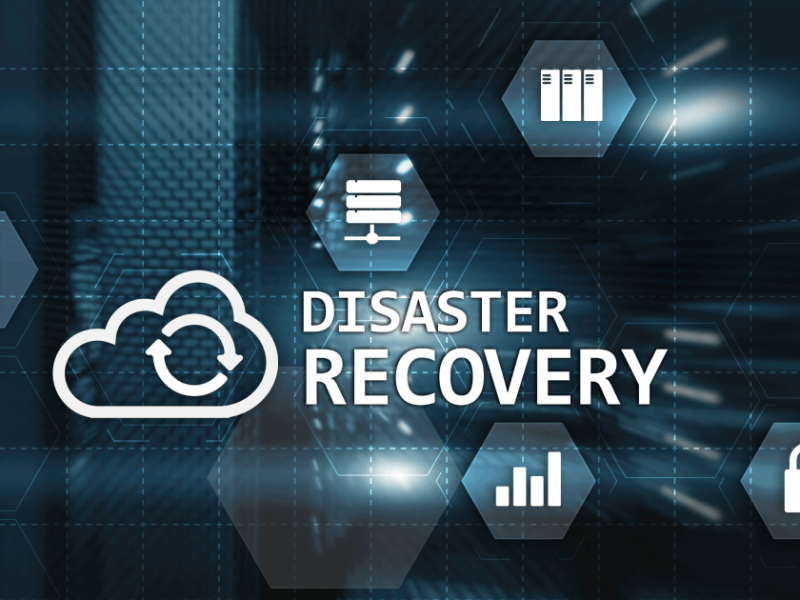- Eight phases are prevention, preparation, identification, response, recovery, business continuity, post-recovery and continuous improvement.
- The necessity for continuous plan enhancement is highlighted, stressing regular updates for technological and regulatory alignment to maintain business resilience.
In the ever-evolving digital landscape, IT systems form the backbone of modern businesses. However, these systems are not immune to disruptions from disasters, be it natural catastrophes or cyber threats. This comprehensive guide delves into the stages of IT disaster recovery, ensuring that businesses are well-prepared for any eventuality.
Prevention Phase: Fortifying the First Line of Defence
The journey towards IT resilience begins with prevention. Organisations must conduct thorough risk assessments to identify potential vulnerabilities and implement robust security measures. This proactive approach can significantly mitigate the impact of future disasters.
Preparation Phase: Crafting the Blueprint for Recovery
A well-thought-out disaster recovery plan is the cornerstone of preparedness. By establishing a multidisciplinary response team and setting clear Recovery Time Objectives (RTOs) and Recovery Point Objectives (RPOs), businesses can tailor their recovery strategies to meet specific operational needs.
Identification Phase: Swift Detection of Incidents
Early detection is crucial for effective disaster response. Advanced monitoring systems and alert mechanisms enable swift identification of incidents, allowing businesses to act promptly and initiate their recovery plans without delay.
Response Phase: Containing and Assessing the Impact
In the heat of a disaster, the response phase involves immediate action to contain the situation and assess the extent of the damage. This might include isolating affected systems, safeguarding data, and ensuring the safety of personnel.
Also read: What is cloud backup and recovery?
Recovery Phase: Restoring IT Systems and Services
With the situation under control, the focus shifts to restoring IT systems and services. This involves retrieving data from backups, relaunching critical applications, and re-establishing network connectivity to get operations back on track.
Business Continuity Phase: Ensuring Ongoing Operations
As IT systems come back online, the business continuity phase ensures that business processes can continue without interruption. This may involve temporary work arrangements, utilising alternative facilities, or adopting remote working solutions.
Post-Recovery Phase: Reflecting on the Incident
Once the recovery is complete, a thorough post-recovery evaluation is conducted. This phase involves a deep-dive analysis to identify areas for improvement, evaluate the business impact, and measure the effectiveness of the recovery efforts, providing valuable lessons for future planning.
Continuous Improvement Phase: Evolving with Experience
Disaster recovery is an ongoing process that requires continuous adaptation and enhancement. Organisations must stay vigilant, refining their disaster recovery plans in light of new technologies, emerging threats, and the accumulation of experience from past incidents. Regular training, testing, and updates are essential to maintain readiness and adapt to the ever-changing landscape.
Also read: Microsoft launches fix for CrowdStrike-affected Windows PCs
More points
- The Human Element: Training and Awareness
A critical component of disaster recovery is the human element. Regular training and awareness programs ensure that all staff understand their roles during a disaster. This includes understanding the recovery plan, knowing how to respond to various scenarios, and being familiar with the tools and procedures for recovery. - Legal and Regulatory Compliance
In the aftermath of a disaster, organisations must also consider legal and regulatory implications. This includes data protection laws, reporting requirements, and any industry-specific regulations that may be affected by the disaster. Compliance must be maintained throughout the recovery process. - Communication Strategy
Effective communication is vital during all stages of disaster recovery. This includes internal communication with staff, external communication with customers, and media management. A clear communication strategy helps to manage expectations, provide updates, and maintain trust during a crisis.
In an era marked by uncertainty, a comprehensive IT disaster recovery strategy is not just beneficial—it is indispensable for business survival. By understanding and implementing these stages, organisations are not merely preparing for disaster—they are positioning themselves to not only withstand but also to thrive amidst adversity. The true mark of a resilient business lies in its foresight to prepare, its agility to adapt, and its strength to emerge stronger from challenges.

